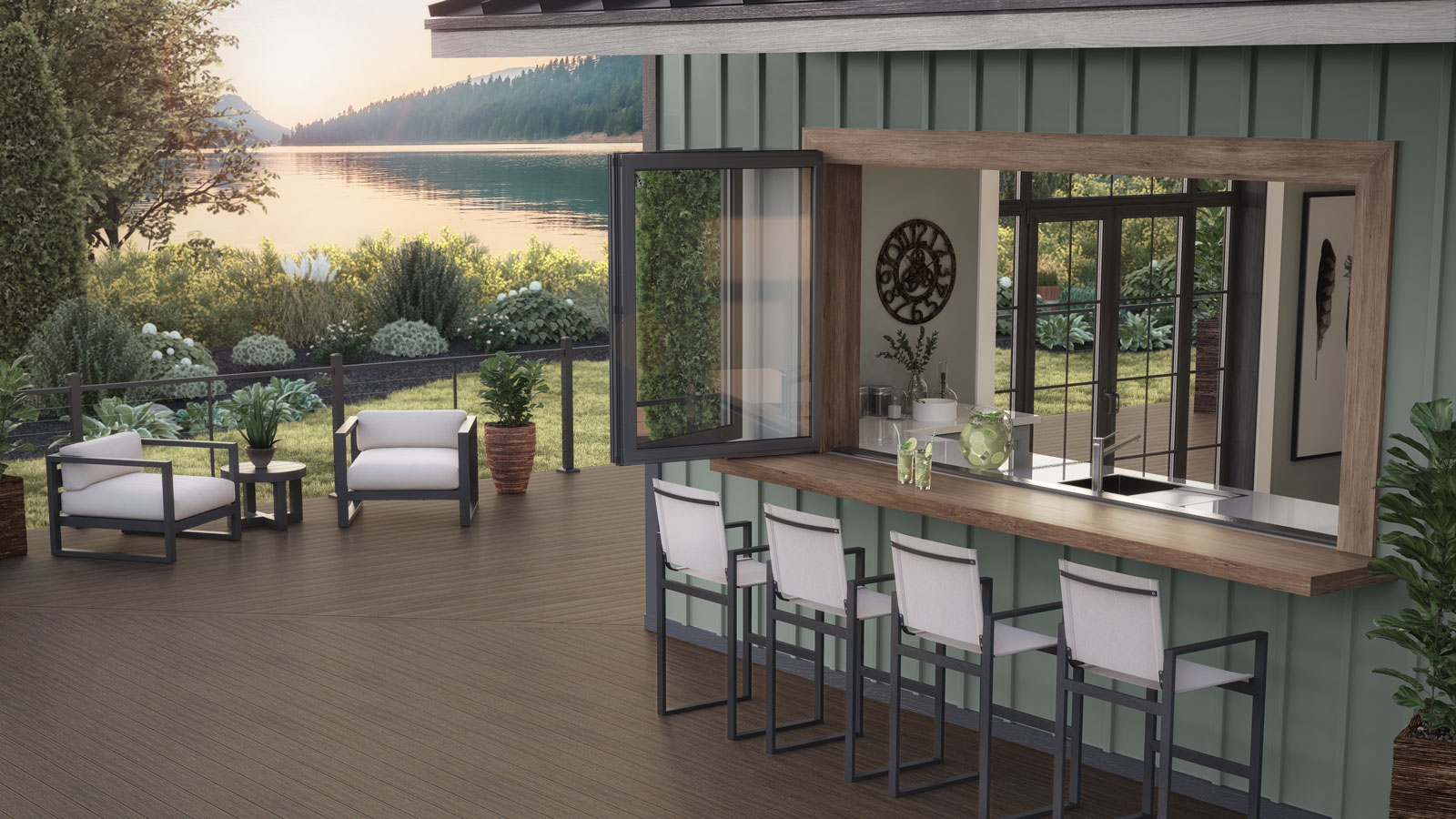
There are several reasons why you might find yourself looking for slippery deck solutions to make your outdoor space safer. If you haven't been fastidious about deck maintenance the result could be that things may be getting a little slippery underfoot due to a build up of dirt, mud, leaves or pollen.
Maybe you've had a prolonged rainy season, live in a humid environment or are careless with your sprinkler and it's regularly dousing your deck. All of these can lead to a build-up of algae, moss, mold or mildew that contributes to a slippery and slimy surface. Other times it can be something as simple as morning dew that can make deck life a little precarious.
Meanwhile if you're thinking about new deck ideas, the decking surface you choose is also relevant, as some boards are more likely to get slippery than others. Many composite brands now have enhanced traction features, while timber choices such as cedar or redwood are less slippery when wet compared to other woods. With help from the experts, we've put together some slippery deck solutions, so you can enjoy your outdoor space year-round without tripping hazards.
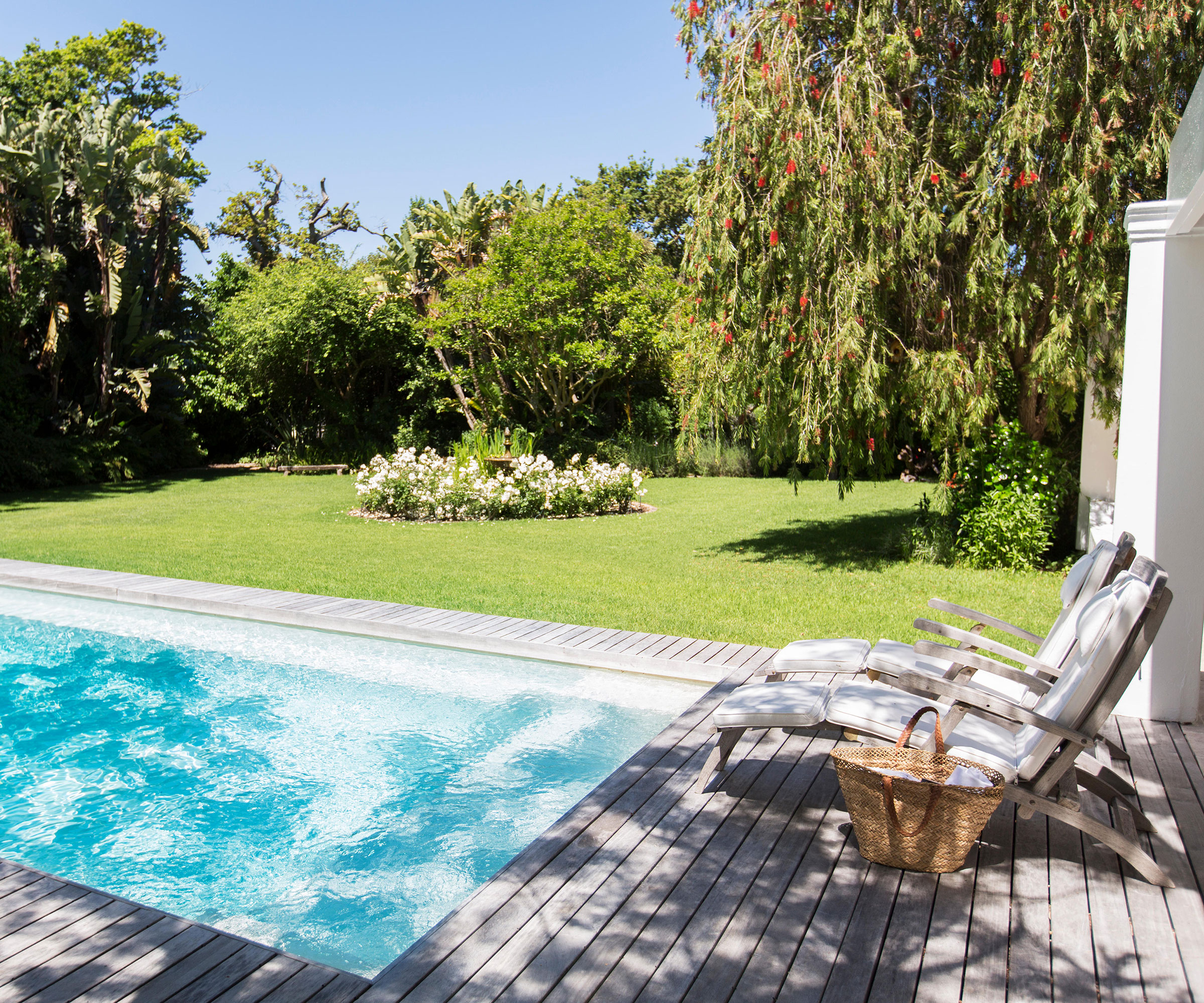
5 ways to deal with slippery decks fast
'A slippery deck can be a safety hazard, especially during wet or icy conditions,' says home improvement specialist Joshua Bartlett, founder of I'll Just Fix It Myself. 'Several factors can cause a deck to become slippery, such as algae or moss growth, worn-out or improperly applied deck coatings, or simply the nature of the decking material itself.'
Take action now with our easy expert tips on how to deal with the problem of slippery decks, either to deal with an existing deck or alternatively if you don't want to make a decking design mistake when embarking on a new project.
1. Get your deck squeaky clean
'To treat a slippery deck, there are a few approaches you can take,' says Jacky Chou, principal and director at architecture firm Archute. 'One option is to employ some good old-fashioned elbow grease and give your deck a thorough cleaning.'
To clean a deck, use a mixture of water and mild detergent. This might be all you need to remove green mold from a wood deck, which can contribute to slipperiness. 'If stains are hard to shift, try a deck cleaner specifically formulated to remove any pesky algae and stubborn mold stains,' suggests Jacky. 'Scrub away with a stiff brush to ensure you're not just giving it a spa treatment but also removing any slippery substances.'
Although you may prefer to clean a deck without a pressure washer, occasionally you may, in fact, have to pressure wash your deck to remove embedded dirt, algae, or mold. First check your deck is made of materials that can withstand it to avoid making a deck cleaning mistake. Use a pressure washer with an appropriate nozzle and always follow the manufacturer's guidelines to avoid damaging the wood. Be sure to rinse thoroughly with clean water afterward.
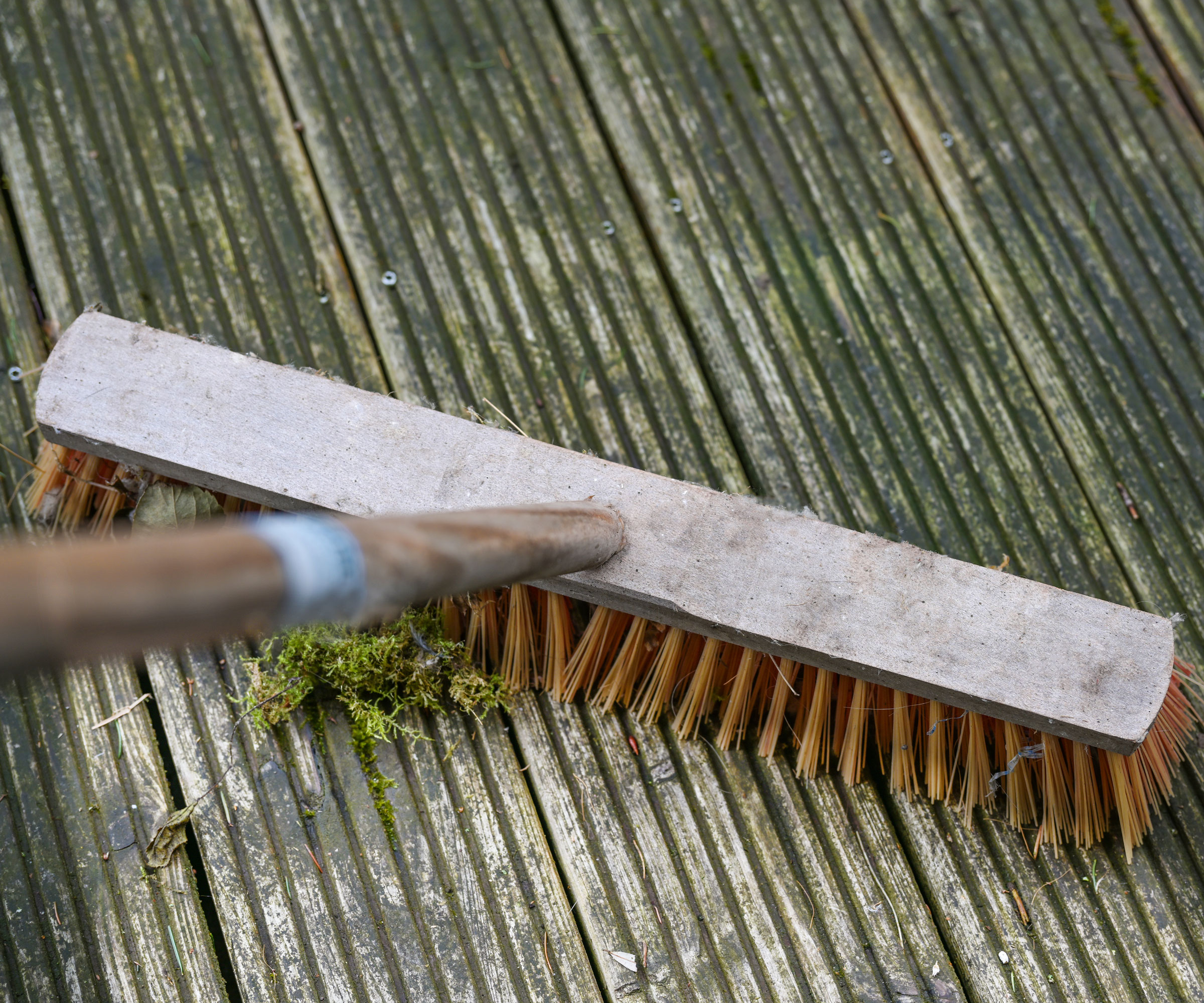
2. Treat your deck with an anti-slip coating
Once your deck is clean, consider applying an anti-slip coating or paint specifically designed for decks. 'These products contain additives that provide traction and reduce the slipperiness of the surface, reducing the chances of an impromptu slip 'n' slide adventure,' says Jacky Chou.
First find out how to paint a deck and prep the boards correctly. Then explore textured paint and stain options that provide a slightly rougher surface, reducing slipperiness while adding a unique touch to your deck's aesthetics. Always make sure the product is suitable for the type of decking material you have.
Another way of treating a slippery deck is by applying a sealant coating that contains additives to improve grip and provide better traction on wet surfaces while also protecting against UV damage from sunlight exposure.
'The most obvious options are anti-slip decking stains, paints, and sealants,' says Jon Christensen, CEO of renovation company BidMii. 'These products contain particles that create a rougher, less slippery surface. They come in many different colors so unless you have a wild deck color, you should be able to find something that will match.
'For the paint/stain, I'd recommend Cuprinol Anti Slip Decking Stain and INSL-X Sure Step Acrylic Anti-Slip Coating Paint.' adds Jon. 'For sealants, try RTG Deck, Porch, Patio Anti-Slip Paint and SlipDoctors Dura Grip Non-Slip Sealer.'
Meanwhile Ryan Vaughn, co-owner of San Diego Stamped Concrete & Staining, has this top tip that's worth knowing. 'In my experience, some of the best products available in the market include epoxy coatings with added grit textures or rubber granules mixed in. These coatings work well in high traffic areas.'
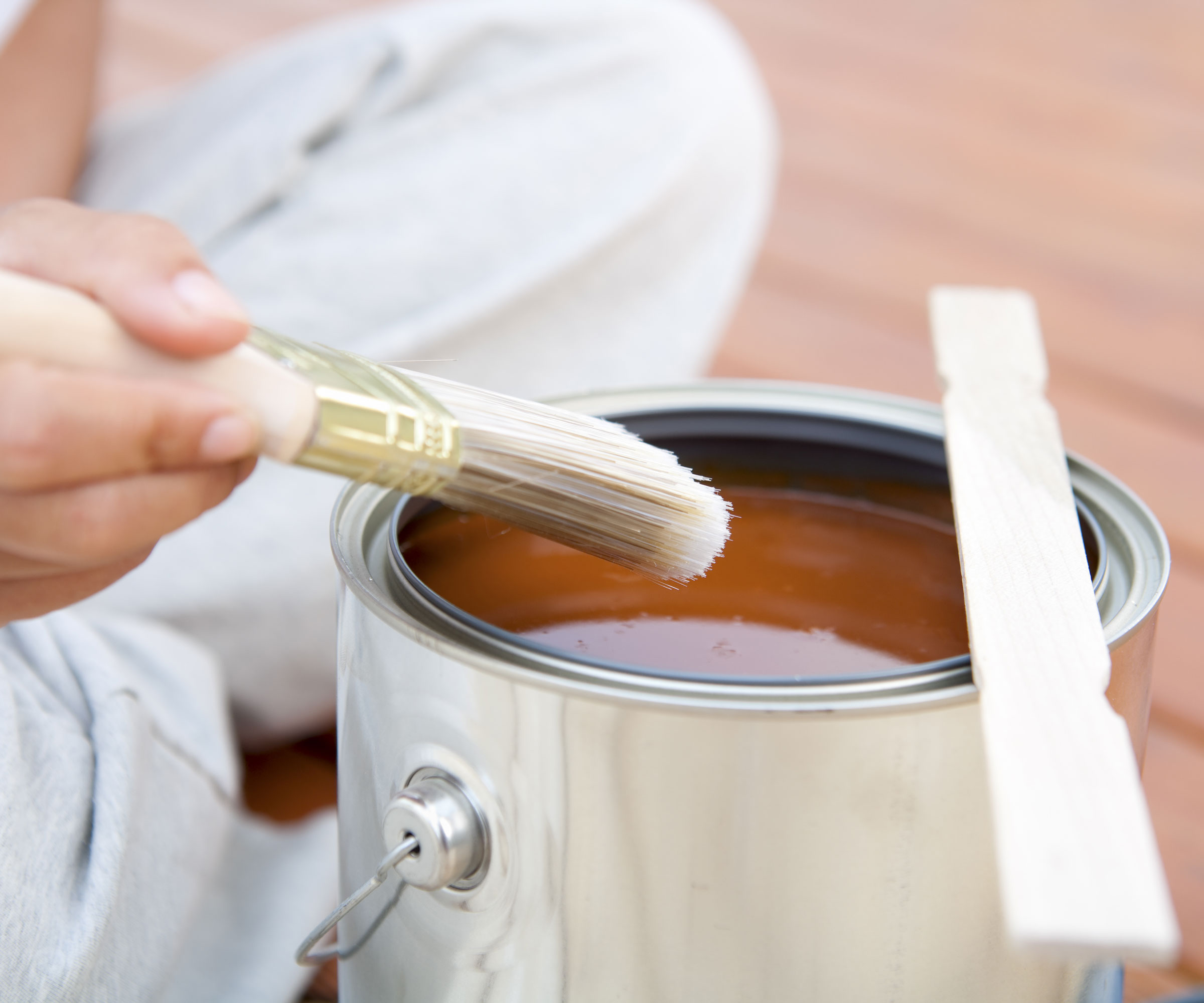
3. Use a stick-on anti-slip product
Another one of the quick fix slippery deck solutions to consider once your deck is clean are products that you can stick on the surface.
'While you can improve traction on your wooden deck through cleaning, sanding, and refinishing, a simpler solution that will also offer better traction is to install stick-on traction pads on key walkways and decking steps,' says Todd Saunders, CEO of FlooringStores. 'These are available in a variety of colors, from high-visibility yellow to black or transparent, meaning that they will only stick out as much as you want them to. They last for years and offer solid traction even in icy conditions.'
Consider anti-slip tape too, available from Amazon. 'This provides more traction for your feet when walking on damp surfaces,' says Ryan Vaughn.
Whatever you decide on, always choose a product specifically designed for your decking material and carefully follow the manufacturer's instructions for proper application.
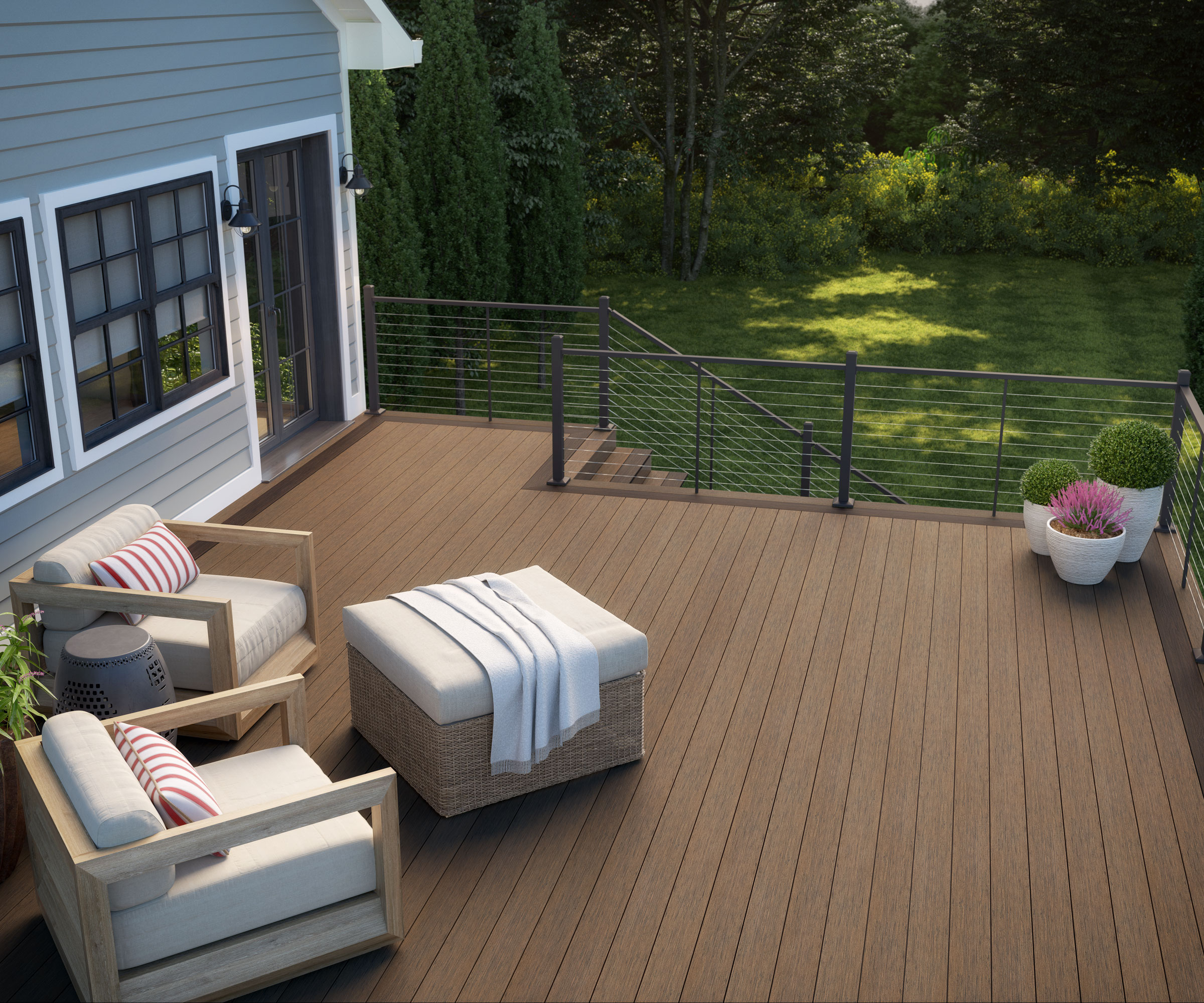
4. Maintain your deck properly
It's important to maintain your deck regularly to keep it in good condition. It's best to do a thorough inspection in spring, then repeat again in fall but meantime keep your eye open for any other potential problems throughout the year.
Look out for other tripping hazards such as any loose or damaged boards that may become wet and slippery over time. 'Replace damaged or rotten boards promptly to make sure the surface of your deck is safe,' says Jacky Chou. 'By keeping your deck structurally sound, you're reducing the chances of any unexpected slips and falls.'
If your deck tends to get slippery after rainfall, enhancing the drainage system can also help. 'Ensure that your deck has a proper slope or grading, allowing water to flow away instead of pooling on the surface,' says Jacky. 'You can also consider adding gutters or downspouts as to divert water away from the deck, reducing its exposure to moisture.'
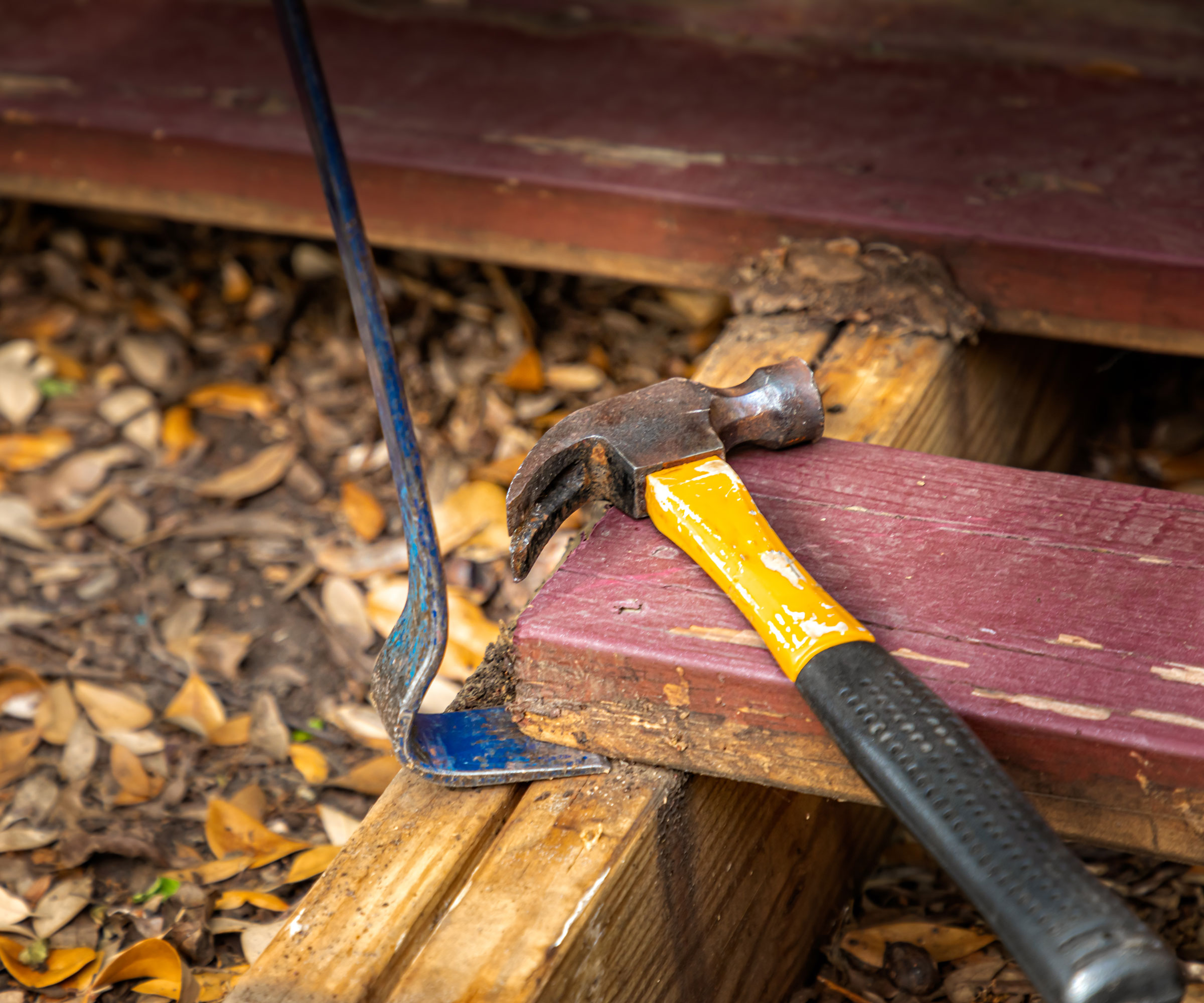
5. Buy some non-slip outdoor rugs
If you prefer a non-permanent solution, placing anti-slip outdoor rugs or walkway matting on your deck can provide extra traction for high traffic areas. 'Opt for materials that are suitable for outdoor use, such as synthetic fibers or polypropylene, which are resistant to moisture and mildew,' says Jacky Chou. 'Ensure that the rugs have a slip-resistant backing or use rug grippers to secure them in place.'
Non-slip outdoor rugs now come in a great choice of styles and colors, so you can accessorise your deck with a design feature while also ensuring it's safe for walking. They are made from high grade materials that are soft underfoot and offer great slip resistance. They can also be rolled up for storage if your deck isn't in use during winter.
Try a waterproof and stain resistant design like this woven reversible outdoor rug from Amazon.
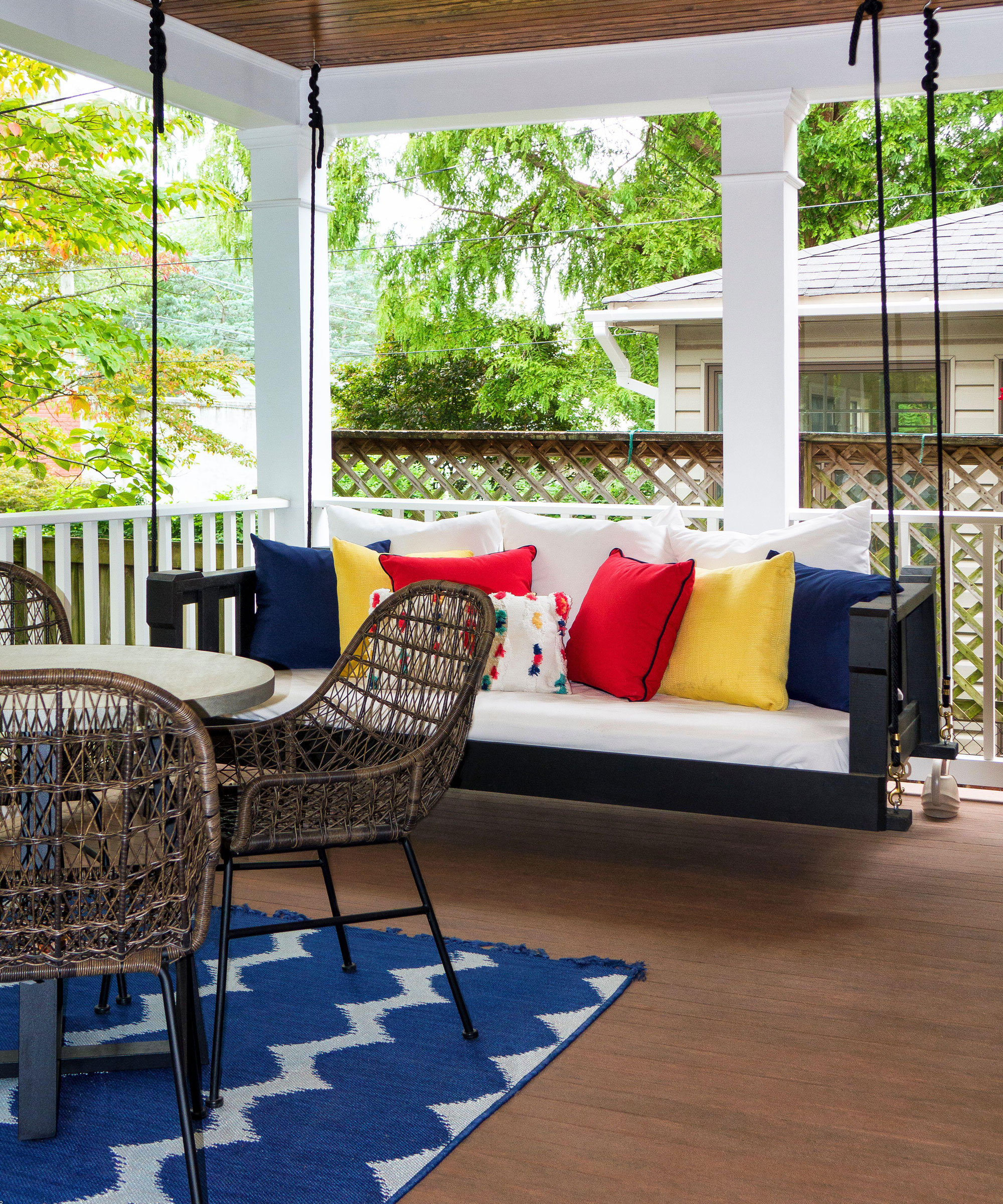
FAQs
What is the best anti-slip decking material?
'If you're talking about putting in a new deck, I'd recommend a less slippy wood choice such as cedar or redwood,' says Jon Christensen, CEO of renovation company BidMii. 'These are way less likely to become slippery when wet when compared to other woods.'
You could also install a low-maintenance composite deck that typically comes with some type of ridged surface. When walking on grooved composite decking, your feet will have a firmer hold to prevent slips.
There is of course the option of covering your deck with a pergola, gazebo or retractable roof to prevent it from becoming slippery. These help to protect the surface of your decking from the elements, making it less prone to water damage and the build-up of dirt, mold and leaves that can cause slipping hazards.







